Historical university
-
The origins of the Estudi General de Barcelona
Although in Europe the first studia generalia were founded during the 11th and 12th centuries in Bologna and Paris, in Catalonia, the earliest institutions of this type emerged in Lleida (1300), Perpignan (1349) and Girona (1446).
In Barcelona, there have been chairs of higher education since at least the 13th century, starting in the Cathedral, the Dominican Convent of Santa Caterina and in the escoles majors, which depended on the city’s governing Council of One Hundred.
It was King Martin the Humane who first proposed the creation of a studium generale in Barcelona in 1398. The city’s representatives rejected the request, but the monarch nevertheless founded the Estudi General de Medicina de Barcelona on 10 January 1401, to which a Faculty of Arts was added in 1402, when it received its founding papal bull from Pope Benedict XIII, also known as Pope Luna.
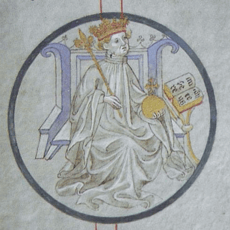
-
The foundation of 1450
On 3 September 1450, at the request of the city of Barcelona, King Alfonso V the Magnanimous issued the charter for the establishment of the Estudi General of Barcelona. The document stipulated that the city should finance ‘everything that is necessary for its foundation’, and that it would offer studies in theology, canonical and civil law, natural and moral philosophy, seven liberal arts, medicine and other sciences. On 30 September, the foundation also received a papal bull from Pope Nicholas V.
However, it took years for the new university to become operational due to the lack of continuous funding, historical circumstances such as the Catalan Civil War (1462–1472), and the constant complaints from the Estudi General of Lleida. Ferdinand the Catholic reactivated the project in 1488 when he issued a charter unifying all the Barcelona schools within the Estudi de Medicina.
On 9 October 1508, the first municipal by-laws were passed, setting out the academic, financial and governance guidelines for the new establishment.
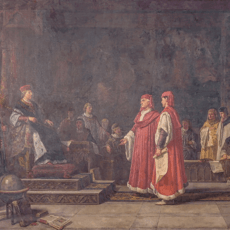
-
Rambla dels Estudis building (1536–1714)
On 17 October 1536, construction began on all the faculties of the studium generale under the leadership of the master builder Tomás Barsa and on land located at the top of the Rambla ceded by Barcelona’s governing Council of One Hundred. The foundation of the institution was approved by Holy Roman Emperor Charles V, and was paid for by the city of Barcelona, the cathedral chapter and several private citizens.
Construction was completed on the building in 1539. It included two floors, a chapel, and a cloister, and displayed a large depiction of the emperor’s coat of arms above the main door, which can still be seen the Historical Building today. After the War of Succession, the building became known as the Caserna dels Estudis (study barracks), which was demolished in 1843 to open the Isabel II Gate in Barcelona’s city walls.
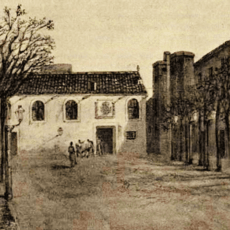
-
The University of Cervera
The defeat of the city of Barcelona in the siege of 1714 and the end of the War of Succession led to the closure of all six estudis generals (Barcelona, Tarragona, Lleida, Girona, Vic and Tortosa) that had been established on the lands of the Principality of Catalonia.
In 1715, higher education was moved to Cervera and the Royal Decree of Erection, signed by Philip V in 1717, established the unification of all studies and the creation of a new university in Cervera. It became the largest public architectural structure built in the Principality during the 18th century.
The University of Cervera was organized into seven major faculties (theology, canons, law, medicine, philosophy and humanities), with a total of twenty-four chairs, nine of which were controlled by the Jesuits until they were expelled from Spain in 1767.
From the 18th century onwards, the city of Barcelona submitted several requests for the re-establishment of an studium generale in the city.
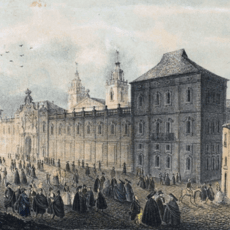
-
The restoration of the city of Barcelona
With the approval of the General Regulations for Public Instruction (29 June 1821), the Barcelona City Council achieved the reinstatement of the University in the city during a solemn act that took place in the Saló de Cent on 16 February 1822.
The restoration of absolutism by Ferdinand VII in 1823 once again re-established the university in Cervera. After the death of the monarch, and at the request of the Barcelona City Council, a Royal Order was approved in 1835 allowing the establishment of four chairs for the study of law in the city.
On 1 September 1837, the Literary University of Barcelona was provisionally re-established, a directive that definitively restored higher education in Barcelona.
Reinstated in the city, the University was established in the premises of the former Convent of Carme. The poor condition of the building and the inadequacy of the facilities forced the rector, Víctor Arnau, to request a new building, which was commissioned to the architect Elias Rogent in 1859.
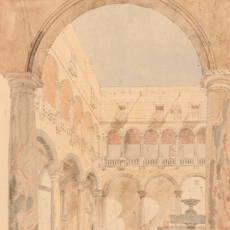
-
The new Literary University of Barcelona
The architect Elias Rogent designed a preliminary project to erect the new university building on the site of the former Convent of Carme, but the lack of space and the numerous expropriations it would require ultimately led to its rejection.
The demolition of Barcelona’s city walls (1854–1856) and the approval of the Cerdà Plan in 1859 opened up numerous available spaces within the new city. This is how the University came to be built in its current location.
Construction work began on 1 October 1863, and was definitively concluded in 1893 with the installation of the fence that surrounded the garden. At that time the University comprised five large faculties: Science, Philosophy and Arts, Medicine, Pharmacy and Law. All of them were located on the new University premises except for the Faculty of Medicine, which remained at Hospital de la Santa Creu until the inauguration in 1906 of its new building annexed to Hospital Clínic, designed by the architect Domènec i Estapà.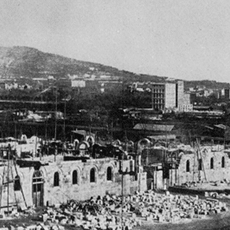
-
Universitat Autònoma de Barcelona (1933–1939)
University life during the early 20th century was marked by numerous meetings convened for the purpose of modernizing the education system, including the First University Congress of Catalonia (1903–1904), the Catalan University Studies meeting (1906) and the Second Catalan University Congress (1918).
Over the course of the first few decades, the University welcomed a generation of new, innovative professors, often recognised Catalanists, who would mark the character of the institution during the first third of the century. These scholars included the philologists Pompeu Fabra and Antonio Rubió i Lluch, the jurist Josep Pella, the historian Francesc Carreras Candi and the architect and historian Josep Puig i Cadafalch. Later, the University was joined by the renowned thinkers Pere Bosch i Gimpera and Jaume Serra Húnter, who would serve as rectors during the Republican period.
With the advent of the Second Spanish Republic and the approval of the Statute of Autonomy of the University of Barcelona on 7 September 1933, the institution became the Universitat Autònoma de Barcelona (not to be confused with the university of the same name founded in 1968 in Bellaterra), and was governed by a board of trustees with representatives from the Government of the Republic, the Catalan Government and the University Senate.
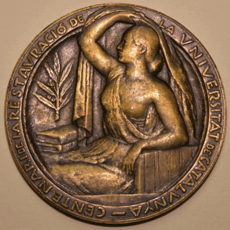
-
The University during Francoism (1939–1975)
The intense bombing of Barcelona during the Civil War also affected the University. On 18 March 1938, Italian aircraft bombs caused serious damage to the roofs, ceilings, windows and laboratories of the University, where two air raid shelters had been established in the basement, built during the month of October 1936.
On 3 February 1939, the University Statute of Autonomy was rescinded, and a period of repression began, during which more than 70% of the teaching staff was made redundant and Catalan language and culture were abolished from academic life.
The 1950s and 60s were marked by student protests against the government, and saw events of great significance such as the constitution of the first free assembly of students in the Paranymph (1957), the creation of the Democratic Student Union and the Caputxinada (1966) and the attack on the Rector’s Office in January 1969.
The transfer of the old Güell estate to the Barcelona City Council provided an excellent opportunity to build a real university city around the Avinguda Diagonal. This area was gradually occupied by the Faculties of Pharmacy (1957), Law (1958), Fine Arts (1960), Business (1961), Economics (1967–1968), Physics and Chemistry (1969), Psychology and Education ( 1970), Philosophy and Geography and History (1970) and Biology (1975).
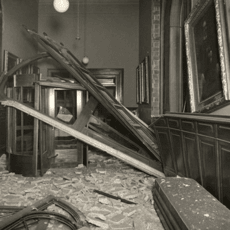
-
The transition to democracy and the re-establishment of university autonomy
The 1970s and 1980s were marked by the enormous social, political and economic transformation that began the long journey of the transition to democracy with the 1977 general elections and the return of President Josep Tarradellas. The period was marked by the rectorship of the philologist Antoni Badia i Margarit (1978–1986), which gave rise to a time of modernization and democratization of university structures at all levels, as well as the recovery of the Catalan language and culture as the basis of higher education.
The approval of the Constitution (1978) and the Statute of Autonomy (1979), together with the University Reform Act of 1983, opened the door to the recovery of the Statute of Autonomy of the University of Barcelona, which was approved by the Catalan Government on 1 July 1985.
The rectorships of Josep Maria Bricall (1986–1994) and Antoni Caparrós (1994–2001) consolidated this autonomy and marked the radical transformation and expansion of the University itself, which established several new faculties: Geology (1985–1986), the Bellvitge Health Campus (1982) and the renovation and adaptation of the Mundet Campus (1995).
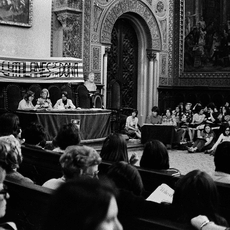
-
The University today
The University’s Statutes of Autonomy were renewed in 1997 and 2003, and emphasized the role of the various University faculties as the core of academic activity. Research, teaching, knowledge transfer and bridges with the production sector and technological world were also strengthened.
The University of Barcelona is currently made up of a community of over seventy thousand people, including students, faculty and administrative and services staff. Its structure comprises sixteen faculties organized among six campuses, the Barcelona Science Park and nine affiliated centres. It is the second largest university in Spain, and holds one of the highest positions in international rankings, where it often appears as the top institution in the country.
Within this framework, the University aims to respond to the needs of society, and has adapted its bachelor’s, master’s and doctoral degree programmes to the European Higher Education Area.

